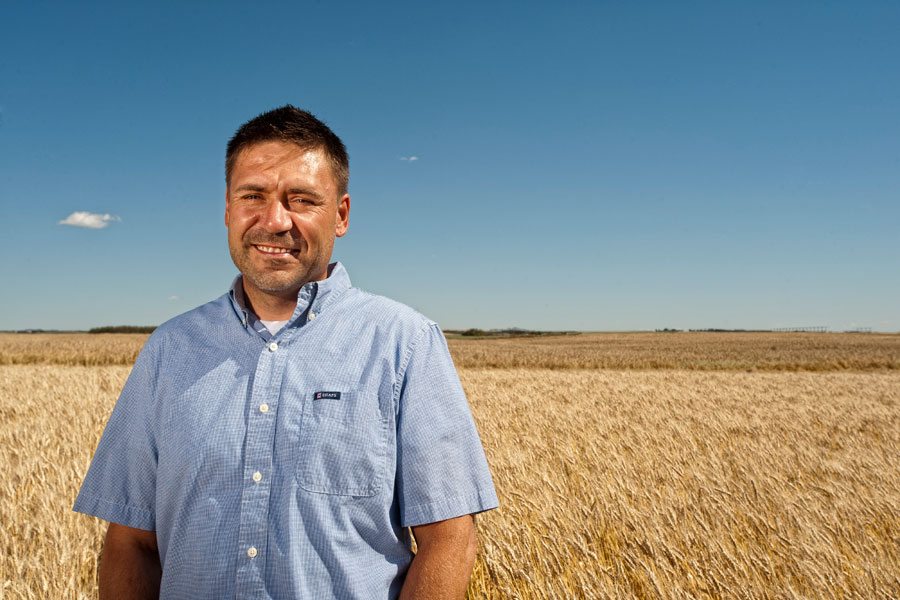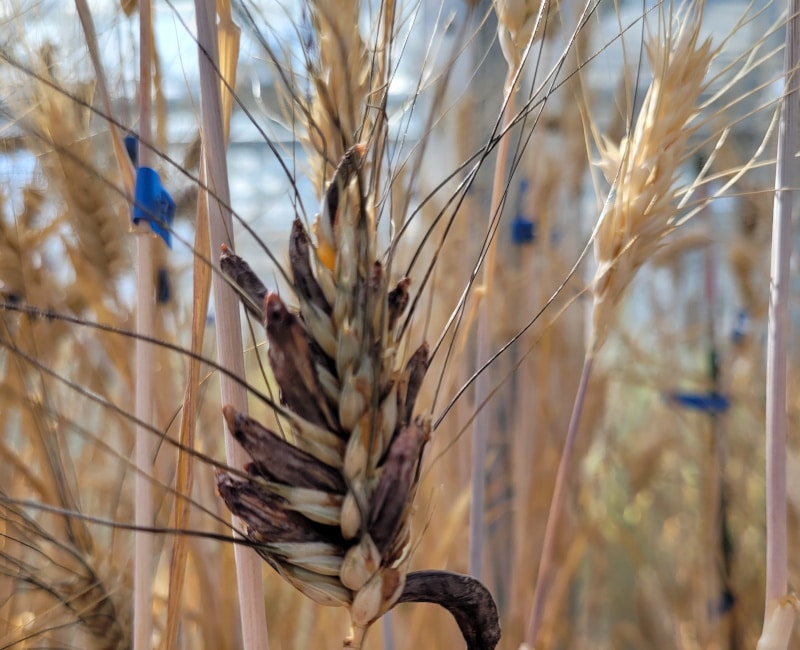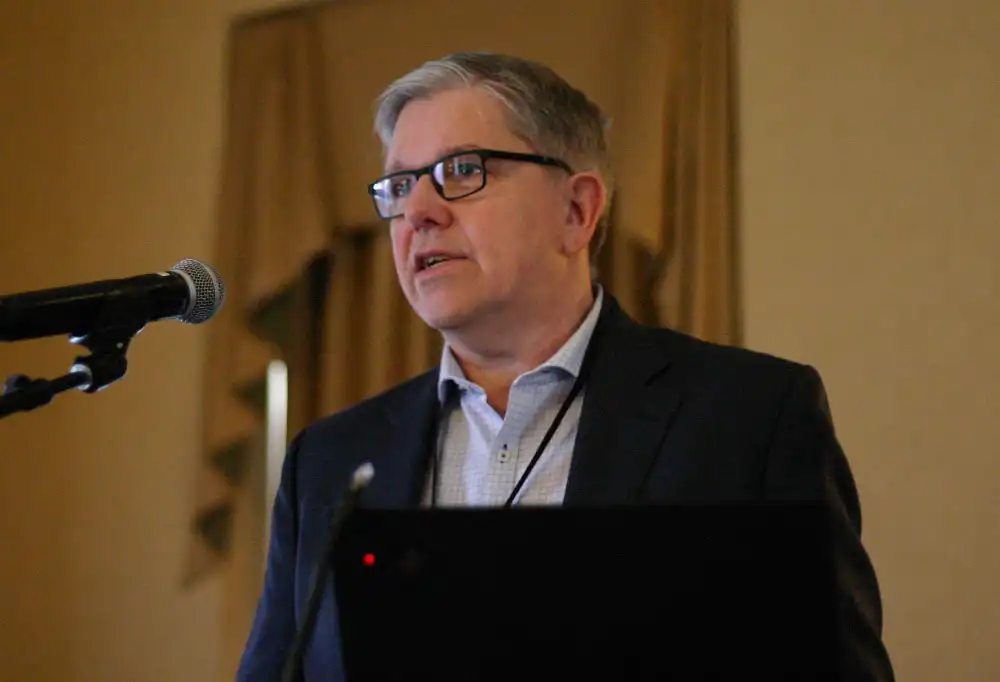Canadian researcher Curtis Pozniak is at the forefront of helping discover the genetic intricacies of a major global crop.
_x000D_
A map is the greatest of all epic poems — its lines and colours show the realization of great dreams. Gilbert Grosvenor, the first editor of National Geographic, said that. Curtis Pozniak learned the same lesson after helping play a major role in mapping the bread wheat genome, a project that could serve to turn the world of wheat on its head._x000D_
_x000D_
“I equate it to looking at the sun; it’s such a massive genome, and we’re still in the early stages of analyzing its composition,” says Pozniak, a University of Saskatchewan wheat breeder. “We now have the genetic blueprint. Now comes the real work of deciphering the code to understand how wheat ticks.”_x000D_
_x000D_
Pozniak co-leads the Canadian Triticum Applied Genomics project with Andrew Sharpe of the Global Institute of Food Security. In early 2016, Pozniak and his team worked to ensure the entire genome of the Chinese Spring wheat variety was mapped completely and accurately._x000D_
_x000D_
Nearly 100 per cent of the genome has been mapped, and is available for download through the International Wheat Genome Sequencing Consortium (IWGSC) wheat sequence repository at URGI-INRA-Versailles, France._x000D_
_x000D_
North American wheat acreage has declined in favour of corn. Since the corn genome was mapped in 2009, it has enjoyed a renaissance with a multitude of new varieties._x000D_
_x000D_
The new wheat genome map is a tool that’s going to do for wheat what’s already been done with corn and other crops, says IWGSC executive director Kellye Eversole. “We really need to enable the development of next-generation breeding tools, and to do that you really need a sequence,” she says._x000D_
_x000D_
Collaboration_x000D_
_x000D_
The IWGSC is made up of researchers from across the globe, and Pozniak has been involved since it was formed in 2005._x000D_
_x000D_
“At that time, a chromosome-by-chromosome approach was being used and there was a real need to come together as an international community to get the genome mapped. The vision of the IWGSC to focus on a chromosome-based approach meant that the genome could be tackled in 21 individual pieces,” Pozniak explains._x000D_
_x000D_
At the time, Canada wasn’t contributing much to the international wheat genomics effort, and Pozniak saw an opportunity to not only help out, but to ensure Canada played a key role._x000D_
_x000D_
_x000D_
Wheat accounts for more than 20 per cent of all calories consumed. The rising global population demands a sustainable and secure source of wheat, pressuring major wheat exporting countries to be at the cutting edge of varietal development._x000D_
_x000D_
Researchers now have a resource to better identify genes responsible for adaptation, pest resistance, stress response and improved yield. But Pozniak says sequencing the Chinese Spring genome is just the start of an exciting discovery process._x000D_
_x000D_
“The genome sequence is like a blueprint of all the genes that make up this variety, but the question is, what do each of those genes do?” he asks. “That will require a significant amount of effort to decipher biology around how that genome is organized, how those genes are expressed, and how they relate to performance in a farmer’s field.”_x000D_
_x000D_
It’s not only farmers who will benefit. John Jacobs, a Belgium-based genomics scientist for Bayer, says that the mapping of the wheat genome is extremely valuable for companies. “We want to increase seed potential, introduce disease resistance and stress tolerance, and for that we need to understand the genetic basis of these traits,” says Jacobs who also sits on the IWGSC Committee._x000D_
_x000D_
Jacobs notes that Bayer is in the early stages of developing a commercial hybrid wheat program. It launched its first wheat variety this year in Ukraine._x000D_
_x000D_
“It’s only in the last six years that we’ve seen a substantial opportunity for wheat,” he says, adding that this renewed focus was due, in part, to the expected innovations in wheat improvement. Although the IWGSC includes members from around the globe, he credits Pozniak and the Canadian researchers with helping it through its final stretch._x000D_
_x000D_
Pozniak’s wheat breeding program, with funding from a number of partners including Genome Canada, Genome Prairie and the Western Grains Research Foundation, worked closely with NRGene and the IWGSC to complete the wheat genome sequence two-to-three years ahead of schedule._x000D_
_x000D_
Jacobs shares that Pozniak, his team and Canada, in general, were especially important in the end, as they secured funding at a moment when there was a breakthrough technology that needed it._x000D_
_x000D_
Opening the Door_x000D_
_x000D_
For Pozniak, the door to a new world of wheat has been opened, but scientists have yet to truly understand what’s on the other side. Pozniak and his team are already working on sequencing the genomes of two Canadian varieties._x000D_
_x000D_
“We’re excited to start comparing how wheat cultivars are different from one another, and understand some of those biological questions about what makes Canadian wheat unique and what makes varieties different from one another at a genomic level,” he says._x000D_
_x000D_
“We’ve already been able to use the data to develop a number of useful molecular tools wheat breeders are using for cultivar development. Ultimately, we can improve breeding efficiency … and anytime you can do that, it will result in better varieties for our producers.”













